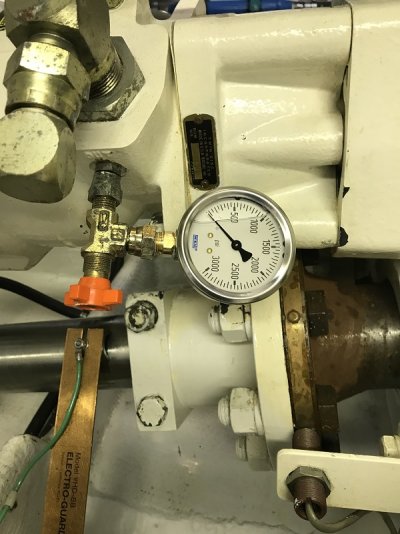tozz
Senior Member
- Joined
- Feb 13, 2017
- Messages
- 323
- Location
- USA
- Vessel Name
- Conundrum
- Vessel Make
- Nordlund 63' Pilothouse
This week we had the pressure gauge on the main hydraulic pump off port engine fail. Hydraulic oil was gushing out the face of the gauge which had cracked. There is a shut valve on the fitting as well that can be used to isolate the gauge.
I have two questions as we result of this experience: First, is this a normal failure mode? I would have not expected the front and back side of the gauge to be connected in any way other than the springs for the needle which is floating in liquid (glycol?). Second, under normal conditions underway should the valve be shut or opened? I assume opened but I guess that begs the question... what is the true purpose of the shut valve?
I have two questions as we result of this experience: First, is this a normal failure mode? I would have not expected the front and back side of the gauge to be connected in any way other than the springs for the needle which is floating in liquid (glycol?). Second, under normal conditions underway should the valve be shut or opened? I assume opened but I guess that begs the question... what is the true purpose of the shut valve?


